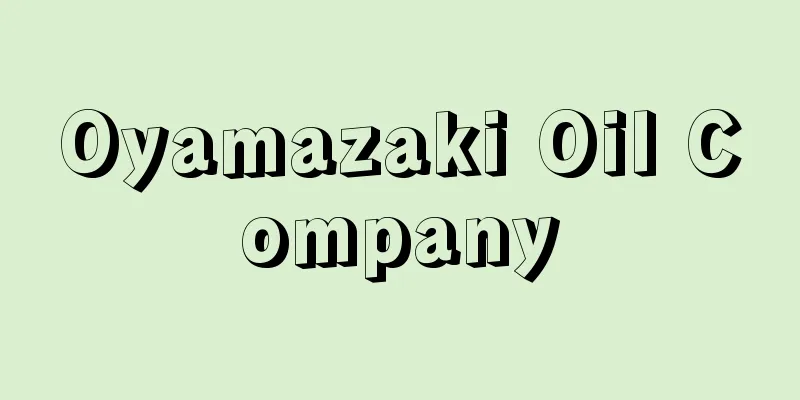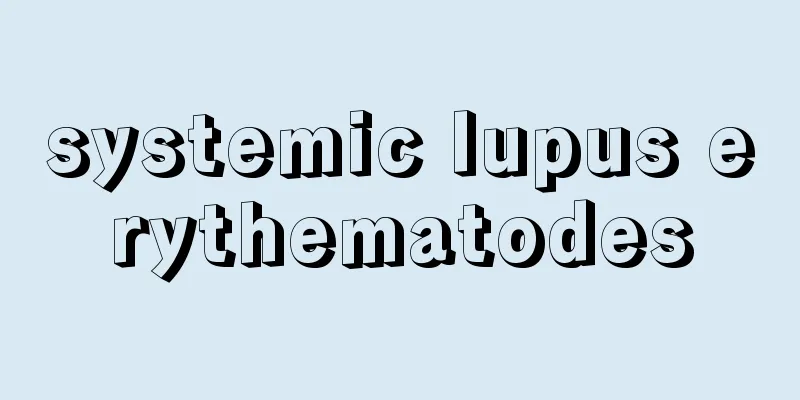Oyamazaki Oil Company

|
In the Middle Ages, the oil za flourished with its base near Oyamazakicho, Otokuni County, Kyoto Prefecture. The documents relating to it are well known as the "Rikyu Hachimangu Documents." Traditionally, this oil za has been considered to belong to Rikyu Hachimangu, a subordinate shrine of Iwashimizu Hachimangu. However, Rikyu Hachimangu was established during the Nanboku-cho period, and the process of the za's establishment was based on a Miyaza led by the wealthy people centered around the local god of Oyamazaki (later Tenjin Hachioji Shrine), which had already been established during the Kamakura period, and a Miyaza (commercial za) serving Iwashimizu Hachimangu was formed. The Zashu (Oil God's people) were the head priests of Hachiman Shrine, and in addition to performing the most important duties of the Hinotsuka Shinto ritual (Hinotosai) on April 3rd, they also performed the Kagamisumi service, the tug-of-war, and donated lantern oil to the inner hall of Hachiman Shrine, and were merchants who sold surplus oil. In 1222 (Jo-o 1), they were granted exemption from customs duties at Fuwanoseki in Mino Province (Gifu Prefecture), and in 1311 (Ocho 1), they were granted exemption from tolls (transit taxes) at Yodo, Kawajiri, Kanzaki, Watanabe, Hyogo, and other customs. They further expanded the privilege of exemption from customs and port taxes, and in the Muromachi period, the shogunate granted the area where Shinto priests lived (the area on the right bank of the Yodo River bounded by Enmyoji to the east and Minase River to the west) the privilege of exempting them from official taxes and making it a place where the shugo could not enter, and they also advanced into Kyoto and set up shop. From the Kamakura to the Muromachi periods, the Zashu were given exclusive rights to purchase perilla (sesame seeds) grown mainly along the Seto Inland Sea coast, and to manufacture and sell oil, and they also controlled local oil merchants, exerting their influence over Nara, where the Fusaka Oil Za (headquartered at Kofuku-ji Daijoin) was operating, as well as the Kinai and Kinki regions excluding Yamato, and the Sanyo and Shikoku regions. However, during the Onin War, the oil trade was hit hard, with oil sellers scattering, and under Oda Nobunaga, the Rakuchu oil company was ordered to be abolished. Toyotomi Hideyoshi recognized the privileges of the Oyamazaki oil company and also allowed the Rakuchu oil company to be revived, but this was only temporary, and with the emergence of rapeseed oil and cottonseed oil, the center of the oil industry moved to Osaka. [Mizue Konishi] [Reference item] |Source: Shogakukan Encyclopedia Nipponica About Encyclopedia Nipponica Information | Legend |
|
中世、京都府乙訓(おとくに)郡大山崎町付近を本拠地として繁栄した油座。その関係文書は『離宮八幡宮(りきゅうはちまんぐう)文書』として著名。従来この油座は、石清水八幡宮(いわしみずはちまんぐう)の末社離宮八幡宮に属するとされてきた。しかし離宮八幡宮の成立は南北朝期のことで、座の成立過程は、鎌倉期にはすでに成立している大山崎の地主神(後の天神八王子社)を中心に長者衆に統率される宮座が基底となり、石清水八幡宮に奉仕する宮座(商業座)が構成されたものである。座衆(油神人(じにん))は八幡宮を本所として第一の重役である4月3日の日使(ひのつかい)神事(日使頭祭(ひのとさい))を務めるほか、鏡澄奉仕や御綱引、八幡宮内殿灯油の献納などを務め、余剰油を販売する商人であった。彼らは1222年(貞応1)には美濃(みの)国(岐阜県)不破関(ふわのせき)の関料免除を認められ、1311年(応長1)には淀(よど)、河尻(かわじり)、神崎(かんざき)、渡辺、兵庫以下諸関の津料(通行課役)免除を許された。そしてさらに関料、津料免除の特権を拡大し、室町期には幕府から神人の住地(淀川右岸の東は円明寺、西は水無瀬(みなせ)川を限る地域)は公方課役(くぼうかやく)免除、守護不入の地とする特権を与えられたほか、京都へも進出して店舗を構えた。鎌倉から室町期にかけて、座衆はおもに瀬戸内海沿岸地域で栽培されるエゴマ(荏胡麻)の仕入れ、油の製造、販売の独占権を与えられ、地方の油商人も支配下に置くなど、符坂(ふさか)油座(興福寺大乗院(こうふくじだいじょういん)を本所とする)が営業する奈良、大和(やまと)を除く畿内(きない)近国一帯、山陽四国地方にまで勢力を振るった。しかし応仁(おうにん)の乱の際、油売りが四散するなどの打撃を受け、織田信長のとき洛中(らくちゅう)油座の破棄を命じられたという。豊臣(とよとみ)秀吉は大山崎油座の特権を認め、洛中油座の復活も認めているが、それも一時的なもので、菜種油、綿実油の出現により製油業の中心は大坂に移った。 [小西瑞恵] [参照項目] |出典 小学館 日本大百科全書(ニッポニカ)日本大百科全書(ニッポニカ)について 情報 | 凡例 |
<<: Oyama pine tree - Oyama pine tree
>>: Oyamazaki [town] - Oyamazaki
Recommend
Iaxartes (English spelling)
…meaning “yellow river”. In ancient Greece it was...
Tiger Lily
A perennial plant of the lily family that grows ne...
Kunitomo
A place name in Sakata County, Omi Province, now N...
Akutagawa Castle
A mountain castle located in Oaza Hara, Takatsuki ...
Lidman, S.
…After World War II, the United Nations became th...
Hua Hong-ming; Ku Hung-ming
Born in 1857 in Penang, Malaya. [Died] 1928. A sch...
Shiraito
[1] 〘noun〙① Undyed white thread. Shiroito. ※Saibar...
Yuki Ujitomo
A military commander in the Muromachi period. He ...
Hosokawa Shigekata
The 6th feudal lord of the early modern Higo Kuma...
Davidia (English spelling) dove tree
A deciduous tall tree of the Davidiaceae family. I...
Pistol shrimp (English spelling)
...The pincers of the long-legged pistol shrimp A...
Fire relay - coffin
Succession of the sacred flame. In the days when ...
Pretoria - Pretoria (English spelling)
The administrative capital of South Africa. It is...
Ordo - Ordo
...Other major works include "Foundations of...
Jet propulsion ship - Jet propulsion ship
Also known as a water jet ship. A ship that uses a...









